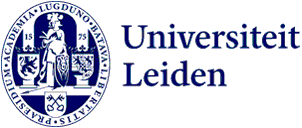
New professor David Holmes engages with age-old counting problems
As of 1 October, David Holmes has been appointed full professor of Pure Mathematics at the Mathematical Institute (MI). His work lies at the intersection of algebra, geometry and number theory.
‘My PhD research and early work was in arithmetic geometry, finding integer solution to equations,’ Holmes explains, ‘but in the last few years I have also been working more with enumerative geometers and mathematical physicists, learning about, and occasionally contributing to, their counting techniques.’
The goal of enumerative geometry is to count geometric objects, like curves in a surface. On the other hand, number theory is about with finding integer solutions to equations. Arithmetic geometry applies geometric techniques to number theory – for example, if the complex solutions of the polynomials form a space with negative curvature, then there are probably few integer solutions.
Counting problems dating back to the ancient Greeks
‘The ancient Greeks asked questions such as “how many circles can lie tangent to three circles in the plane” or “how many right-angled triangles have integer side lengths”. From a modern perspective the first question lies within enumerative geometry, the second within arithmetic geometry (‘the answers are “eight” and “infinitely many”’).
Great developments throughout the years
The problems studied and techniques used have increased vastly in sophistication in the intervening millennia. Holmes: ‘Enumerative geometry has found many applications in, and much inspiration from, mathematical physics. Arithmetic geometry has developed in directions ranging from the Langlands programme to coding theory and cryptography.’
Applying new counting techniques
Will Holmes continue to focus on this in the future? ‘Absolutely. Over the next few years, I plan to continue to work in this enumerative direction, with particular focus on recursive structures in logarithmic Gromov-Witten theory. I also want to apply some new techniques from enumerative geometry to arithmetic questions, in particular the structure of arithmetic moduli of curves and Abelian varieties.’
It becomes clear that Holmes has a passion for mathematics when he mentions some of his mathematical hobbies: algebraic statistics, modelling the populations of mosquito species, and trying to understand the shapes of functions output by neural networks. The MI is very happy to have such an inspired professor as Holmes in its midst.
Holmes studied Mathematics at the University of Warwick and Christ’s College, part of the University of Cambridge. He subsequently obtained his doctorate at the University of Warwick. In 2012 he started working as a postdoc at the Mathematical Institute of Leiden University and his research is currently supported by a Vidi grant. Over the years Holmes has been active within the institute in various ways. For example, he had been a study advisor and a member of the Education Committee Mathematics. Currently he is a member of the Institute Council and the Diversity and Inclusion committee of the MI.
Image: Gerd Altmann via Pixabay
